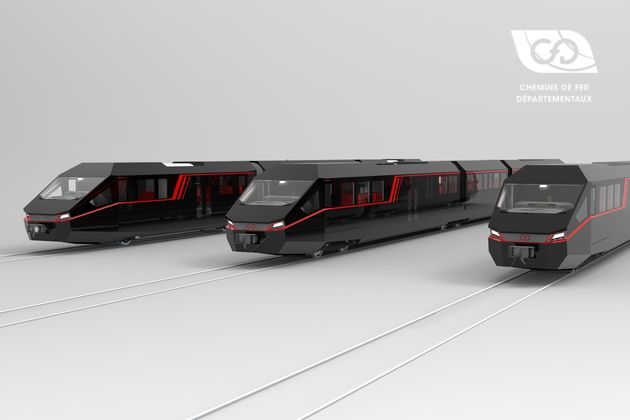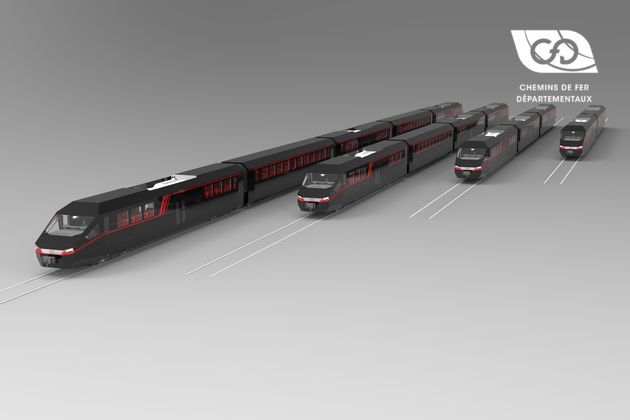The CFD range of passengers vehicles
CFD offers a wide range of railcars. From single vehicles to compound trainsets, axle or bogie units, for use on narrow, normal or wide gauge, there is a CFD solution for your needs.


CFD offers a wide range of railcars. From single vehicles to compound trainsets, axle or bogie units, for use on narrow, normal or wide gauge, there is a CFD solution for your needs.

This new range is designed to offer economical solutions for passenger transport, especially on the former short lines of the national railway network or on secondary lines. Equipped with electric traction systems, the on-board energy is produced by a diesel engine or collected on an overhead contact line and then converted to a DC bus that runs the entire train. Each motor bogie or auxiliary bogie to be powered draws its energy from this DC bus. The entire propulsion system, including the number of bogies or driving axles and the number of diesel engines, is adapted to the use of the trainset and its possible evolution. The range of CFD passengers vehicles is modular, allowing the construction of trainsets with axles or bogies really adapted to the real needs of our customers (from economical light trains to ultra-capacity heavy trains, for metric gauge or standard gauge railway lines, suitable for high speed or intended for use as an omnibus). Each trainset is designed to allow for its evolution over the years, whether in terms of motorization (hybridization or electrification), vehicle configuration (addition of one or two intermediate trailers in an existing trainset) or interior layout. Thus all configurations exist and allow transport operators to define their rolling stock fleet as best as possible and to develop it as they wish.
Originally, a locomotive pulled an evolving number of passenger coaches to adapt the train composition to the number of passengers to be transported, but this required a switch at the terminal station to reposition the locomotive from head end to tail end, or to have other traction units available.

The advent of self-propelled trainsets solved this problem but no longer allows this capacity evolution. With this type of equipment, if no additional movements are possible, the use of multiple unit train control (twinning between units of the same model) or the replacement of existing equipment by a series with greater transport capacity is necessary. One of the major problems with the multiple unit train control solution is that the length of the train may be longer than the platform dimensions of the stations on the line. The length of each driver's cab not used in the constituted train is a dead weight to be towed, giving no additional seating places, it also corresponds to a high cost in unused safety equipment (signalling systems in each driver's cab can be very expensive). CFD offers the possibility of changing the internal composition of trainsets several years after entry into service by adding driving bodies or simple trailers between the end bodies. This solution makes it possible to keep pace with the increase in passenger traffic for reduced investment and operating costs. The same is true if it is decided to electrify the line during operation by adding boxes each with a pantograph and energy conversion systems. The engine compartment of each original engine is then kept as it is to allow thermal traction on non-electrified tracks, or it may be chosen to remove the diesel engine to allow the installation of rechargeable energy storage systems on catenary or hydrogen fuel cells and make it a true hybrid self-propelled vehicle. Finally, the vehicle interiors are designed to be modular, for example by giving priority to seating places or cycle transport locations thanks to in-situ conversion solutions that are simple to implement without disassembling.